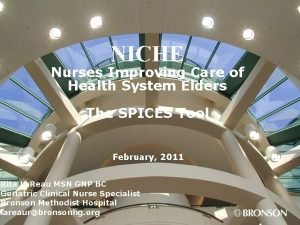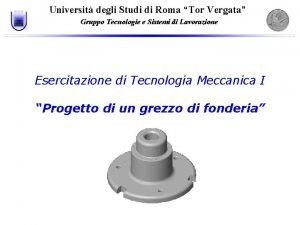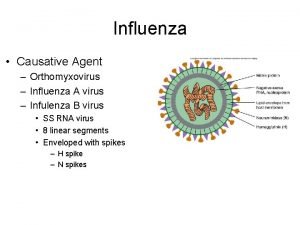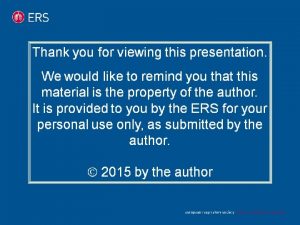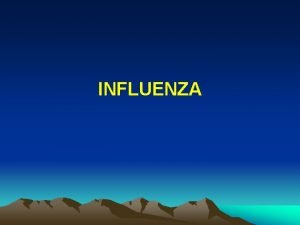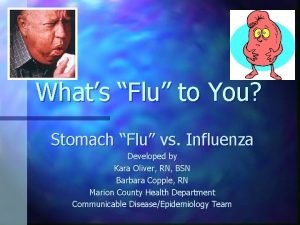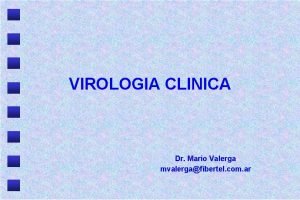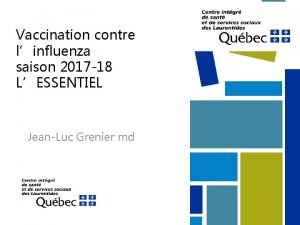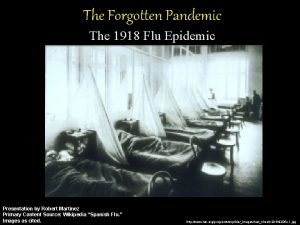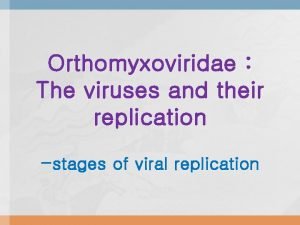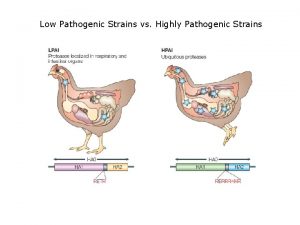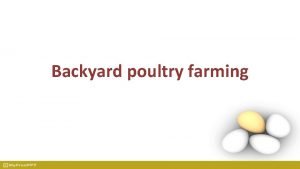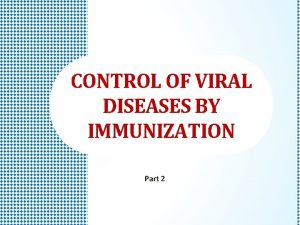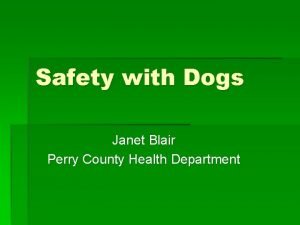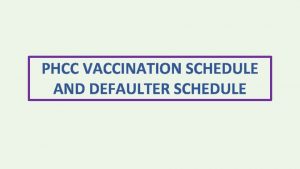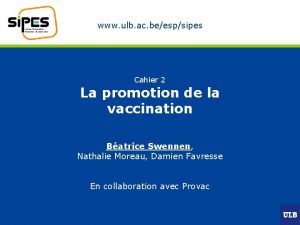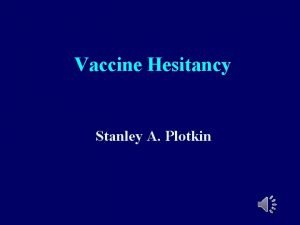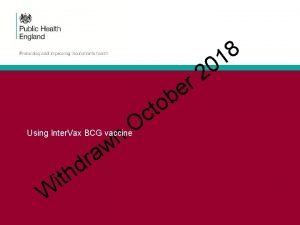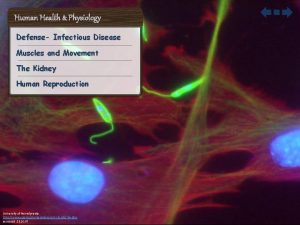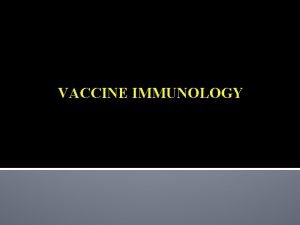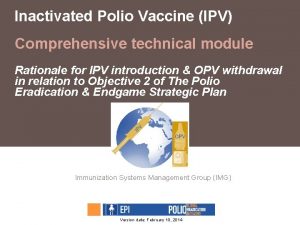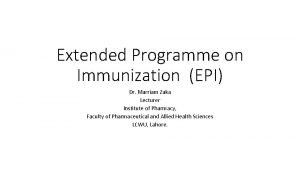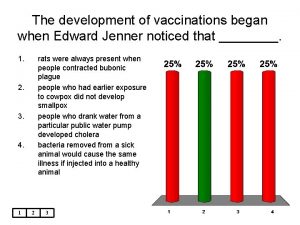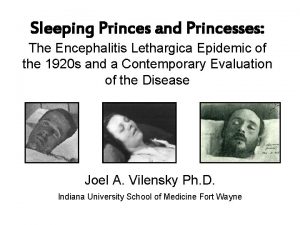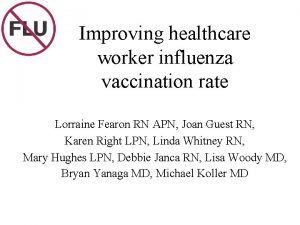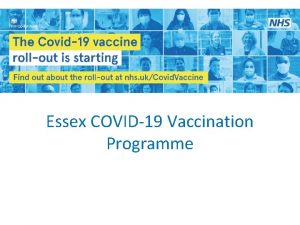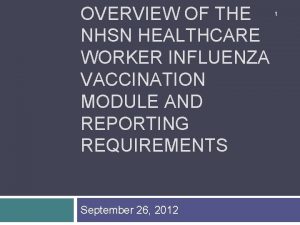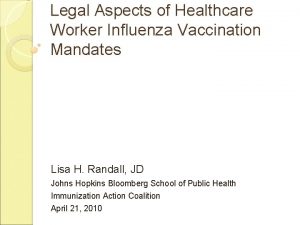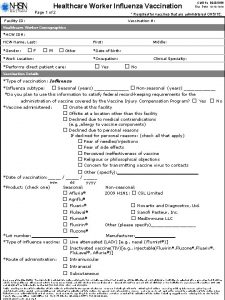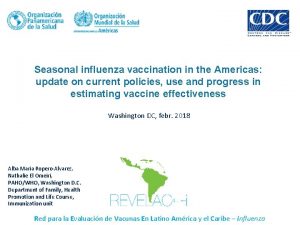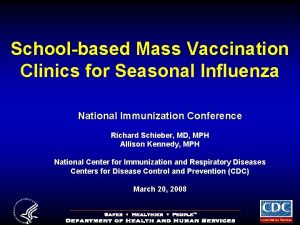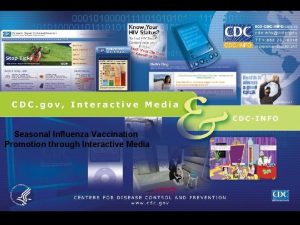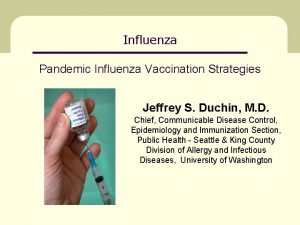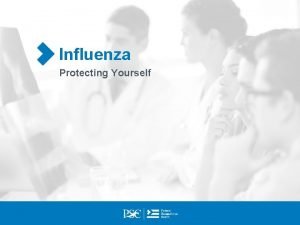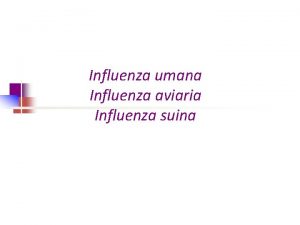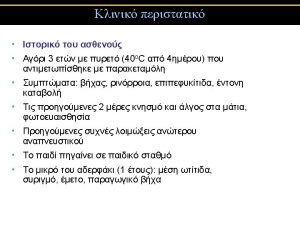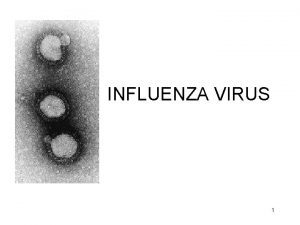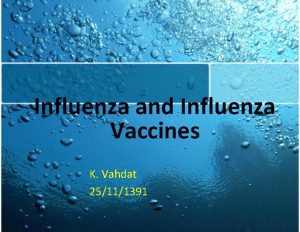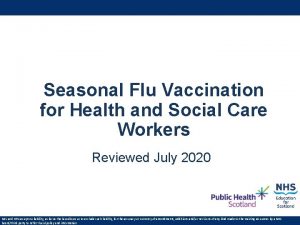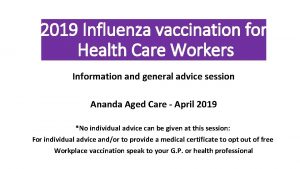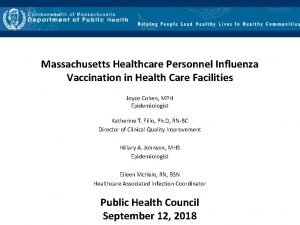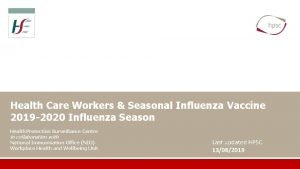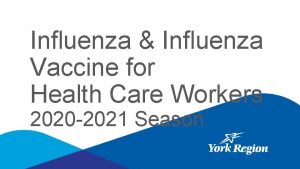Improving Health Care Worker Seasonal Influenza Vaccination at





























- Slides: 29

Improving Health Care Worker Seasonal Influenza Vaccination at University Health System Presented by Jose Cadena, MD- Asst. Professor, Infectious Diseases, UTHSCSA Amruta Parekh, MD, MPH – Education Development Specialist, UTHSCSA Work supported by UT System, UTHSCSA, IHI/Macy Foundation, VA Educating for Quality Improvement & Patient Safety

Objectives • Describe the quality chasm in healthcare • Identify our local efforts to narrow the chasm • Illustrate spread of quality and safety principles at our institution using a QI project as a paradigm Educating for Quality Improvement & Patient Safety

Team UTHSCSA Jan Patterson, MD –Medical Director, Infection Control Jose Cadena, MD – ID physician Jason Bowling, MD - ID fellow Amruta Parekh, MD, MPH – Educational Development Specialist UHS Beth Ann Ayala, MT(ASCP), MS, MBA, CIC - Director, Infection Control Teresa Prigmore, MHA – Director, Employee Health Priti Mody-Bailey, MD – CMO, Community Medicine Associates Leni Kirkman – Director, Corporate Communications Theresa Scepanski – VP Human Resources

Background HCW with influenza can infect patients. Infectiousness begins 1 day before symptoms. Up to 50% of infections may be subclinical. Seasonal influenza vaccine is 70 -90% effective in preventing infection in healthy adults and reduces absenteeism. • ACIP, SHEA, and IDSA recommend immunization of all HCW. • National average HCW vaccination < 50%. • •

Available at NIAID; http: //www 3. niaid. nih. gov/topics/Flu/understanding. Flu/community. Immunity. htm. Accessed on 10/14/2009

University Health System Previous seasonal influenza vaccination rates were < 60% for University Health System (UHS) – 58. 8% 2008 -09 season – 58. 5% 2007 -08 season – 45. 0% 2006 -07 season

University Health System • – – UHS is a 500 bed tertiary care hospital Solid organ transplant program Hematology oncology unit Level 1 trauma unit Neonatal ICU

Aim Statement To improve the UHS employee seasonal influenza vaccination rate to 80% or more by December 2009 at UHS for the 2009 -2010 influenza season. Educating for Quality Improvement & Patient Safety

QI Methodology • • • Interprofessional and multidisciplinary teamwork Brainstorming Getting the Board on board Process flow Cause & effect diagram Data collection Audit feedback Control chart, Pareto chart, Gantt chart Plan – Do – Study – Act cycle

Select definitions • 80% was chosen as the goal because there is evidence of “herd” immunity at this level of vaccination. • “Contacted” was defined as documentation received by employee health that the HCW received or declined vaccine.


Cause and Effect Diagram

Process Flowchart

Force Field Analysis

Interventions • Interventions were prioritized using the Focusing Matrix of importance vs. ease of intervention. September – November 2009 • Audit/feedback data by unit ØSent to unit directors & residency program directors in dashboard format Ømade available on-line Educating for Quality Improvement & Patient Safety

Interventions(Contd. ) Ø Residency program directors provided documentation of residents vaccinated at affiliated sites. Ø Volunteers recruited to increase access to vaccination on the units and at conferences Ø Hospital educators promoted educational campaign. • Follow up, October – December 2009 • Priority units of the hospital with low rates of vaccination were identified. • Vaccine was redistributed to units as needed. Educating for Quality Improvement & Patient Safety

Additional Interventions • An influenza website, including FAQs and flu blog • Photos of UH leadership getting vaccine on the website and in UHS newsletter. • Weekly updates of rates by department posted on line and emailed to unit managers. • Screen savers and telephone on-hold message. • A letter from the CEO was sent to employees.

Audit Feedback Weekly Dashboard(10 -11 -2010) % Contact Staff Contact Adult Medicine Clinic 10 10 100. 0% 70. 0% All Housestaff 741 380 51. 3% 50. 7% Anesthesiology-UH 14 14 100. 0% 78. 6% CMA Clinic Operations-UFHCSE 51 51 100. 0% 96. 1% Emergency Center 143 142 99. 3% 81. 1% Environmental Services-UH 113 105 92. 9% 74. 3% General Medicine 96 92 95. 8% 64. 6% Hartman Surgical Pavilion 83 82 98. 8% 69. 9% Labor & Delivery 35 35 100. 0% 80. 0% Medicine Critical Care Unit 64 54 84. 4% 71. 9% Neonatal Icu 89 87 97. 8% 86. 5% Obstetrics 52 45 86. 5% 80. 8% Obstetrics Clinic 26 26 100. 0% 92. 3% Operating Room 120 107 89. 2% 70. 8% Outpatient Surgery 28 26 92. 9% 89. 3% Renal Dialysis-Outpatient UH 29 25 86. 2% 51. 7% Renal Dialysis-UCCH 38 33 86. 8% 71. 1% Special Surgery 101 100. 0% 73. 3% Surgery Icu 104 102 98. 1% 80. 8% Department Name % Vaccinated

Nancy Ray, COO of UHS getting vaccinated

Results • From Sept. - December 1 2009, the seasonal influenza vaccination rate was 76. 6% (4271/5578). • Of these 67. 5% received vaccination at UHS, 9. 1% received vaccination from other providers. • Among the 92. 4% contacted, 82. 9% (4147/5578) received vaccination and 863 (17. 1%) declined vaccination.

Results(contd. ) • During the 2008 -2009 influenza season, 81. 9% of employees were contacted for influenza vaccination. • Total vaccination rate was 58. 8%: 54. 4% accepted vaccination at UHS, and an additional 4. 4% received vaccination outside UHS.

• After interventions (September-November 2009), 92. 2% were contacted and the total vaccination rate increased to 76. 6%, a 17. 8% increase from the pre-intervention period (OR 2. 7, 95% CI 2. 5 -2. 97, p: <0. 01).

Control Chart UHS HCW Influenza Vaccination Rate

Pareto Chart Reasons HCW Declining Flu Vaccine at UHS 100. 0% 0. 35 90. 0% 85. 1% 0. 30 80. 0% 70. 0% 0. 25 65. 2% Defects 60. 0% 0. 20 50. 0% 0. 15 0. 14 40. 0% 39. 9% 30. 0% 0. 09 0. 10 0. 07 0. 05 20. 0% 0. 05 10. 0% 0. 00 0. 0% Fear of getting the flu Side Effects Doubt effective Reasons Contraindications

Discussion • Inter-professional QI team using QI tools significantly increased the HCW influenza vaccination rate. – Narrowed the “knowing vs. doing” gap • Vaccination rate still < 95% • SHEA, IDSA, AAP recommending mandatory influenza vaccination in HCW

Discussion • Inter-professional QI team using QI tools significantly increased the HCW influenza vaccination rate. – Narrowed the “knowing vs. doing” gap • Vaccination rate still < 95% • SHEA, IDSA, AAP recommending mandatory influenza vaccination in HCW

Future Direction • Increase the employee flu vaccination rate to > 85% for the 2010 -2011 season • Increase the rate of “contact” with those individuals that did not respond • Emphasize education discussing those subjects that lead to declination • Consider mandatory vaccination as now recommended by IDSA, SHEA, ACIP, AAP

Mandatory Vaccination • Recommended by the IDSA, SHEA. • The BJC Healthcare experience: – 26, 000 employees, 98. 4% were vaccinated and only 8 (0. 03%) were terminated. • The Hospital Corporation of America (2009): – HCW of 163 hospitals, 112 outpatient centers and 368 physician practices. >140, 500 employees ! – Vaccine or surgical mask during season – Vaccination rate : Pre intervention (2008 -2009): 58% vs 2009 96% Babcock et al. Clin Infect Dis. ; 2010; 50: 459 -464. Cormier SB et al. Fifth Decennial International Conference on Healthcare-Associated Infections. Atlanta GA, 2010.

References 1. Molinari NA, et al. The annual impact of seasonal influenza in the US: measuring disease burden and costs. Vaccine 2007 Jun 28; 25(27): 5086 -96. 2. Salgado CD, et al. Preventing nosocomial influenza by improving the vaccine acceptance rate of clinicians. Infect Control Hosp Epidemiol 2004 Nov; 25(11): 923 -8. 3. Pearson ML, et al. Influenza vaccination of health-care personnel: recommendations of the Healthcare Infection Control Practices Advisory Committee (HICPAC) and the Advisory Committee on Immunization Practices (ACIP). MMWR Recomm Rep 2006 Feb 24; 55(RR-2): 116. 4. Caban-Martinez AJ, et al. Sustained low influenza vaccination rates in US healthcare workers. Prev Med Jan 15. 5. Kohn KT CJ, Donaldson MS. To Err Is Human: Building a Safer Health System. Washington, DC: National Academy Press, 1999. 6. Leape LL, Berwick DM. Five years after To Err Is Human: what have we learned? JAMA 2005 May 18; 293(19): 2384 -90. 7. Hannah KL, Schade CP, Cochran R, Brehm JG. Promoting influenza and pneumococcal immunization in older adults. Jt Comm J Qual Patient Saf 2005 May; 31(5): 286 -93. 8. Nowalk MP, et al. Improving influenza vaccination rates in the workplace: a randomized trial. Am J Prev Med Mar; 38(3): 237 -46. 9. Stewart AM. Mandatory vaccination of health care workers. N Engl J Med 2009 Nov 19; 361(21): 2015 -7. 10. Loeb M et al. Surgical Mask vs N 95 Respirator for Preventing Influenza Among Health Care Workers A Randomized Trial. JAMA. 2009; 302(17): 1865 -1871
 Becoming a family support worker
Becoming a family support worker Nurses improving care for healthsystem elders
Nurses improving care for healthsystem elders Improving chronic illness care model
Improving chronic illness care model Primary secondary tertiary health care
Primary secondary tertiary health care Metodo dei cerchi di heuvers
Metodo dei cerchi di heuvers The causative agent of influenza
The causative agent of influenza The great influenza rhetorical analysis
The great influenza rhetorical analysis Influenza
Influenza Influenza
Influenza Stomach flu vs influenza
Stomach flu vs influenza Is influenza a airborne disease
Is influenza a airborne disease Virus de la influenza
Virus de la influenza Influenza vaccine dosage chart 2019-2020
Influenza vaccine dosage chart 2019-2020 Influenza ww1
Influenza ww1 Influenza virus replication
Influenza virus replication Low pathogenic avian influenza
Low pathogenic avian influenza Poultry vaccination schedule
Poultry vaccination schedule Vaccination schedule in palestine
Vaccination schedule in palestine Spay perry county
Spay perry county Defaulter vaccination schedule
Defaulter vaccination schedule Vaccination bruxelles
Vaccination bruxelles Mandatory vaccination
Mandatory vaccination Intervax bcg
Intervax bcg Vaccination a la defense
Vaccination a la defense Meaning of variolation
Meaning of variolation Pcv vaccine dose
Pcv vaccine dose Epi
Epi Edward jenner
Edward jenner Japanese encephalitis vaccination sydenham
Japanese encephalitis vaccination sydenham Niccolo paganini powerpoint
Niccolo paganini powerpoint

